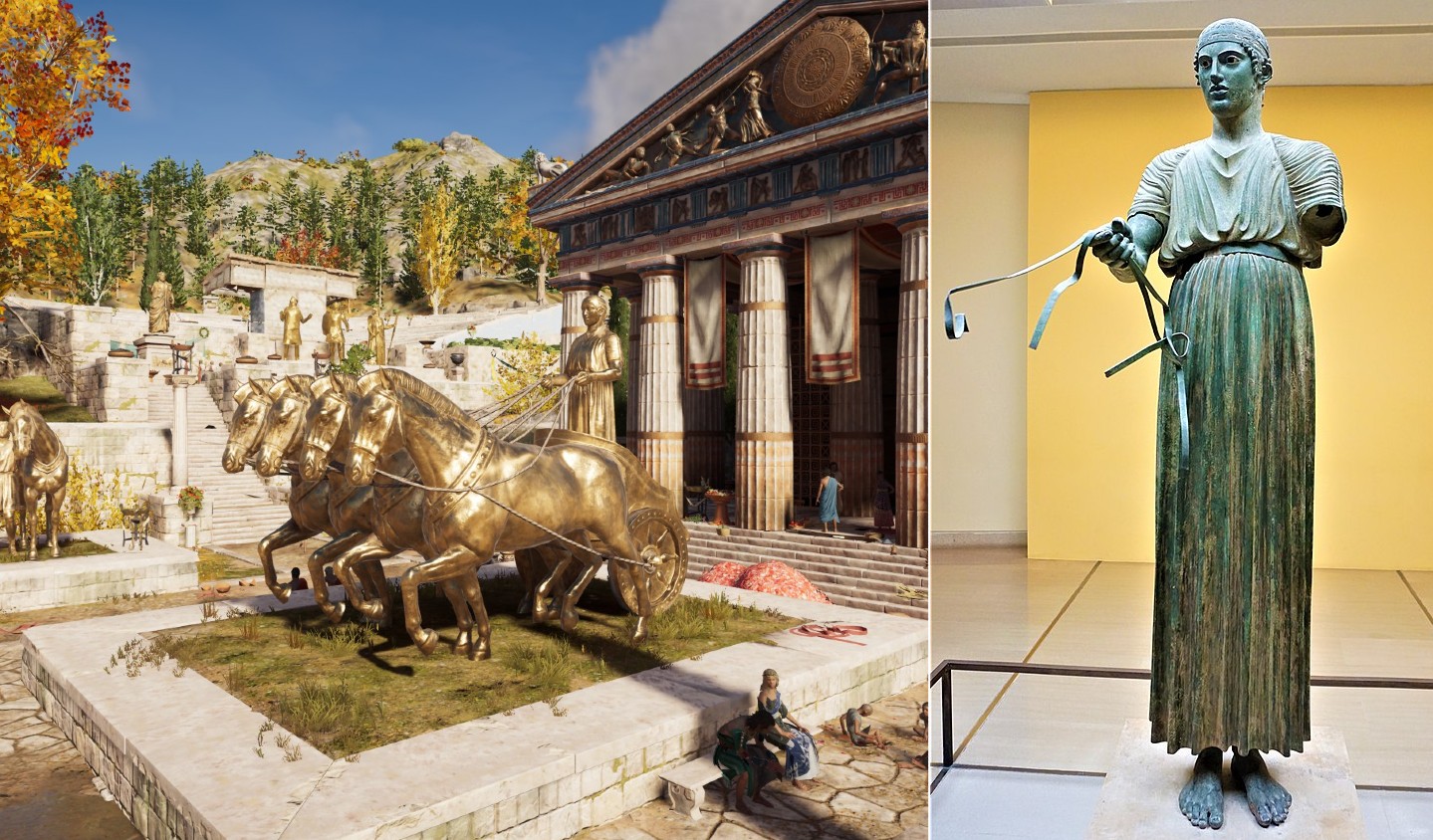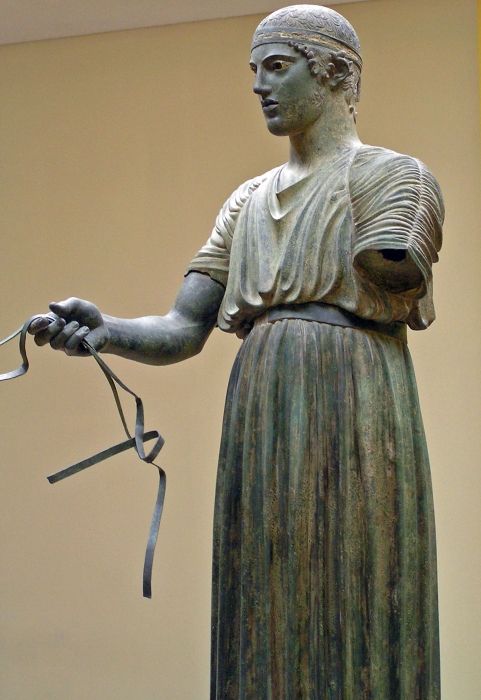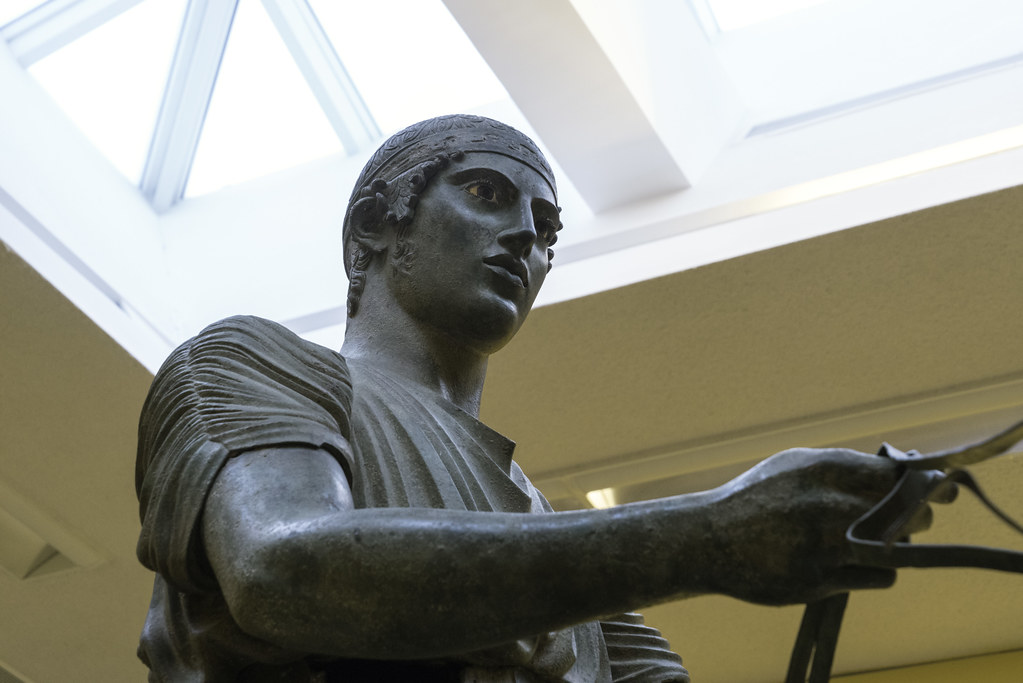The ancient world is a treasure trove of captivating artifacts, each piece a window into the rich cultural tapestry of its time. Among the most remarkable of these treasures is the Charioteer of Delphi, a bronze statue that has stood as a testament to the artistic brilliance of Ancient Greece for over two millennia. This awe-inspiring sculpture, found in the Sanctuary of Apollo in Delphi, has captured the imagination of scholars, art enthusiasts, and the general public alike, offering a glimpse into the remarkable achievements of the ancient world.
The Significance of the Charioteer of Delphi

The Charioteer of Delphi, also known as Heniokhos, is a life-size (1.8m) statue that was discovered in 1896 at the Sanctuary of Apollo in Delphi, Greece. This remarkable bronze sculpture is an exemplary representation of ancient Greek art, showcasing the remarkable technical and artistic prowess of the artisans who created it. The statue depicts a chariot driver, or charioteer, standing upright and poised, his expression serene and his posture exuding a sense of grace and power.
The Artistic Mastery of the Charioteer
The Charioteer of Delphi is a true masterpiece of ancient bronze sculpture. The level of detail and technical precision exhibited in the work is truly awe-inspiring. The statue’s features, from the finely sculpted facial features to the intricate folds of the charioteer’s garments, demonstrate the artist’s exceptional skill and attention to detail. The bronze medium itself was a challenging material to work with, requiring the artisan to possess a deep understanding of casting techniques and metallurgy.
The Historical Context of the Charioteer

The Charioteer of Delphi dates back to the 5th century BC, a time of great cultural and artistic flourishing in Ancient Greece. The statue was likely commissioned as a votive offering to the god Apollo, whose sanctuary at Delphi was a renowned center of religious and cultural importance. The Charioteer’s placement within the sanctuary suggests that it may have been associated with chariot racing, a popular sport and spectacle in the ancient world.
The Preservation and Legacy of the Charioteer
The Charioteer of Delphi has endured the ravages of time, standing as a testament to the enduring legacy of ancient Greek art. Despite its age, the statue has been remarkably well-preserved, allowing modern viewers to appreciate the full extent of the artisan’s skill and vision. Today, the Charioteer of Delphi is housed in the Delphi Archaeological Museum, where it continues to captivate and inspire visitors from around the world.

The Charioteer of Delphi is a truly remarkable work of ancient art, a testament to the boundless creativity and technical mastery of the ancient Greek artisans. This captivating bronze statue, discovered in the Sanctuary of Apollo in Delphi, stands as a timeless embodiment of the cultural and artistic achievements of the ancient world.
Through the Charioteer, we are granted a window into the past, a glimpse of the remarkable accomplishments of a civilization whose influence can still be felt in the art, architecture, and philosophical traditions that shape our modern world. As we gaze upon this majestic figure, we are reminded of the enduring power of art to transcend the boundaries of time and space, connecting us to the rich tapestry of human history and the boundless creativity of the human spirit.